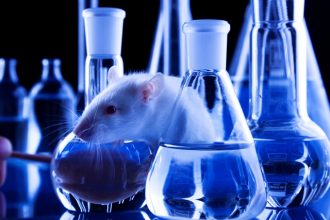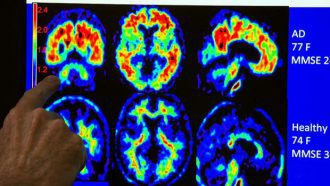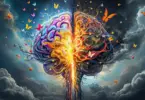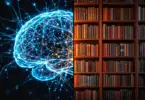Contributing writer for Wake Up World
Scientists in Brisbane, Australia, have discovered a non-invasive ultrasound technology that fully restores memory function in 75 percent of Alzheimer’s test animals.
Affecting close to 50 million people worldwide, dementia — of which Alzheimer’s disease is the most common form — is expected to impact 135 million people by 2050. In the United States, Alzheimer’s strikes one in eight elderly Americans and is the sixth-leading cause of death. Over 15 million Americans provide unpaid care for a person with Alzheimer’s and other dementias [source] and, in 2016 alone, an estimated $236 billion was spent in supporting Alzheimer’s patients, making it the most expensive disease in America. [source]
Alzheimer’s is a progressive brain disease in which abnormal protein deposits (otherwise known as amyloid plaques and neurofibrillary tangles) accumulate in the brain and cause cells to die. It is a devastating experience for both the patient and family members — so it goes without saying, any method that can slow or reverse the progression of this disease is desperately needed. For years, however, effective pharmaceuticals and other treatment options have been limited — until now.
[pro_ad_display_adzone id=”110028″]
The Ravages of Alzheimer’s
If you haven’t had direct experience with a family member suffering from Alzheimer’s, there’s a good chance you know someone who has. In the United States the disease is expected to increase 44 percent by 2025 — with Western and Southeastern states hit the hardest.
Sherry’s story is just one of many that illustrates the life-changing impact a diagnosis of Alzheimer’s has on the patient and family members.
“A few years ago, my mother — my best friend — became victim to Alzheimer’s. One night, she was sitting in her house alone, in the dark, as I stopped by to check on her. She hadn’t eaten or fed her little dog. That was when I realized she needed to be seen by a professional.
Many years (and many changes) later, she is in an assisted-living facility. Now she has the care she needs, and I know she is watched, fed and cared for daily. I tried to have her live with me in the beginning, but that ended up in six months of confusion. She now seems happy to hang out with her new friends. I used to visit every day, but after about six months, I could no longer keep up the pace. She also seems sort of bothered by the visits.
My sister and I are her legal guardians, and we have endured so many sad times. Everything is left up to us. My sweet husband helps us in business matters and offers us comfort.
Mostly, I’m angry. My mom gave to others and loved others. She was so smart and beautiful.
What can I tell anyone in this situation? Just face the truth. The person you loved will not be back. It is not your fault. I wear a ring on my index finger that says, “Accept.” I look at it often. Every little change in her upsets me. I have to always let it go.
I would rather die now than to ever go through this disease. Whenever I forget anything, I go into a spin. The fear is large. The answers are few.” [source]
For people like Sherry’s mom, her care involved making sure she was safe and comfortable. Current treatment options to slow or reverse the disease are limited — which is why a recent discovery at the University of Queensland could offer a ray of hope to Alzheimer’s patients and their families.
New Alzheimer’s Treatment Improves Memory Without Damage to Brain Tissue
Australian researchers believe they’ve found a technology that could be a game changer in the fight against Alzheimer’s disease: high-energy ultrasound.
“Our research was very exploratory and we really didn’t expect to see such a massive effect,” said study author Juergen Goetz of the University of Queensland in Brisbane. “I’m really excited by this.” [source]
For several weeks, mice who had been genetically altered to produce amyloid plaques in the brain were treated with focused beams of ultrasound. What the scientists discovered was startling — in 75 percent of the animals, the plaque was completely cleared with zero brain tissue damage.
“Publishing in Science Translational Medicine, the team describes the technique as using a particular type of ultrasound called a focused therapeutic ultrasound, which non-invasively beams sound waves into the brain tissue. By oscillating super-fast, these sound waves are able to gently open up the blood-brain barrier, which is a layer that protects the brain against bacteria, and stimulate the brain’s microglial cells to activate. Microglial cells are basically waste-removal cells, so they’re able to clear out the toxic beta-amyloid clumps that are responsible for the worst symptoms of Alzheimer’s.” [source]
Even though there is still some debate in scientific circles as to whether plaque is the cause or merely a symptom of the disease, the experiment established that mice who received the treatment had significantly improved memory over the course of three different tests — a maze, a challenge to get them to recognize new objects, and another to have them remember the places they should avoid.
The research team hopes to start human trials sometime in 2017.
To learn more about causes and emerging treatments for Alzheimer’s disease, please visit our Alzheimer’s research page.
Article sources:
- www.theguardian.com/…/alzheimers-breakthrough-as-ultrasound-successfully-treats-disease-in-mice
- www.stm.sciencemag.org/content/7/278/278ra33
- www.sciencealert.com/new-alzheimer-s-treatment-fully-restores-memory-function
- www.alz.org/alzwa/documents/alzwa_resource_ad_fs_ad_state_growth_stats.pdf [PDF]
- www.act.alz.org/…Costs_Fact_Sheet_version_2.pdf?docID=7161
Recommended articles by Carolanne Wright:
- Antibiotics Shown to Impair Memory, Stop Growth of New Brain Cells
- Renowned Harvard Psychologist Says ADHD is Largely a Fraud
- Plastic Waste in the Ocean Will Outnumber Fish by 2050
- Hyperbaric Oxygen Treatment Reverses Fibromyalgia in 70% of Patients, Researchers Find
- Over 100 Scientific Studies Agree: Cannabis Annihilates Cancer
- Why Every Parent Should Consider Unschooling
- First U.S. City Produces More Electricity Than It Uses — With 100% Renewable Technology
- If You Care About Animals and the Earth, Here’s Why You Need to Boycott Palm Oil Immediately
- Almost Free Energy? For the Cost an iPhone, You Can Now Buy a Wind Turbine to Power Your Entire House
- Why You Should Have a Himalayan Crystal Salt Lamp in Every Room of Your House
- Wind-Powered Device Pulls Up to 10 Gallons of Pure Drinking Water a Day — From Thin Air
- Plastic-Eating Mushroom Discovered in the Amazon Rainforest — A Solution for Our Trash Saturated World?
[pro_ad_display_adzone id=”110025″]
[pro_ad_display_adzone id=”110027″]








